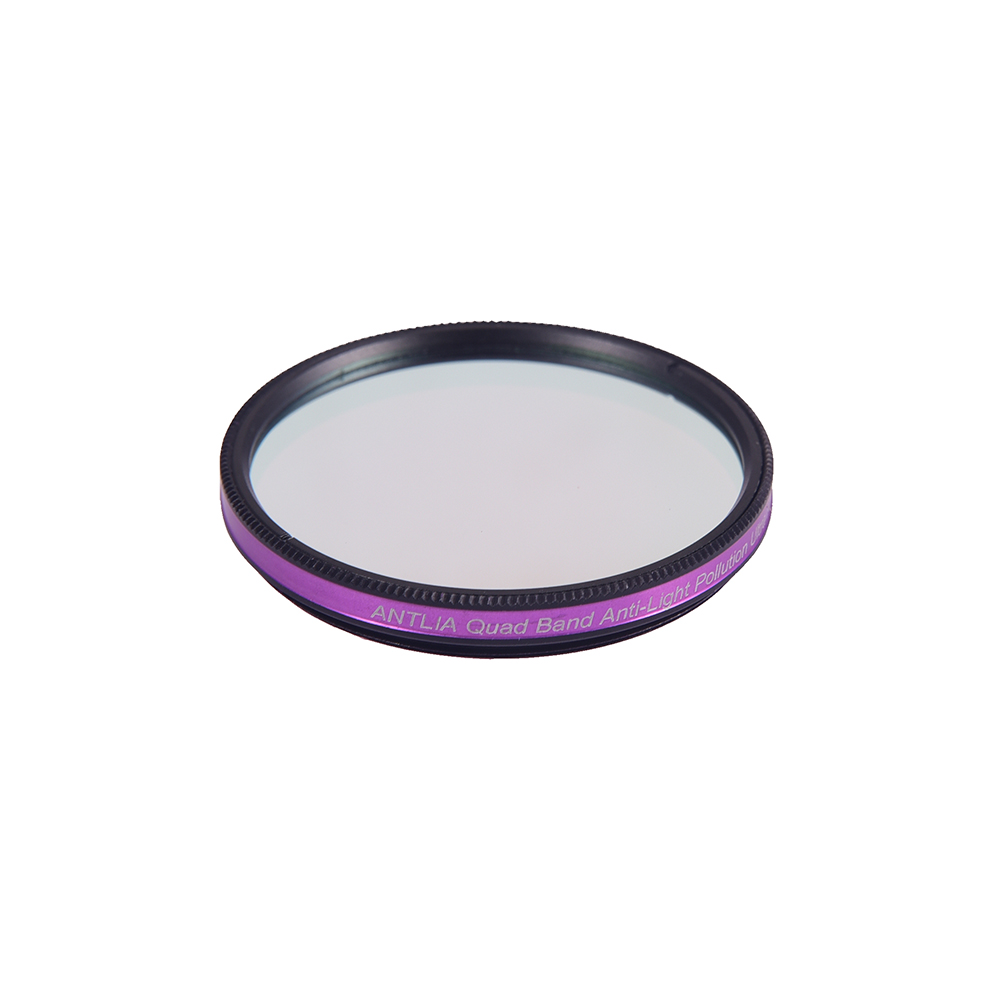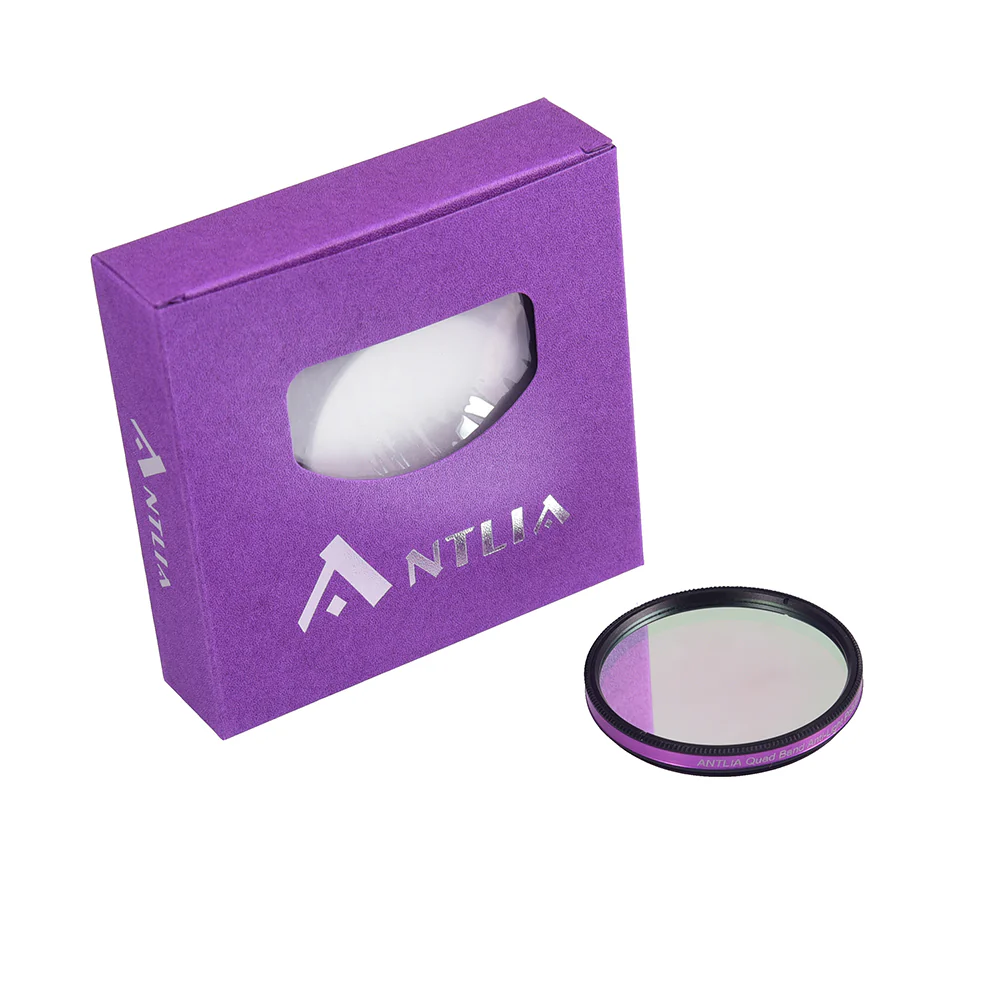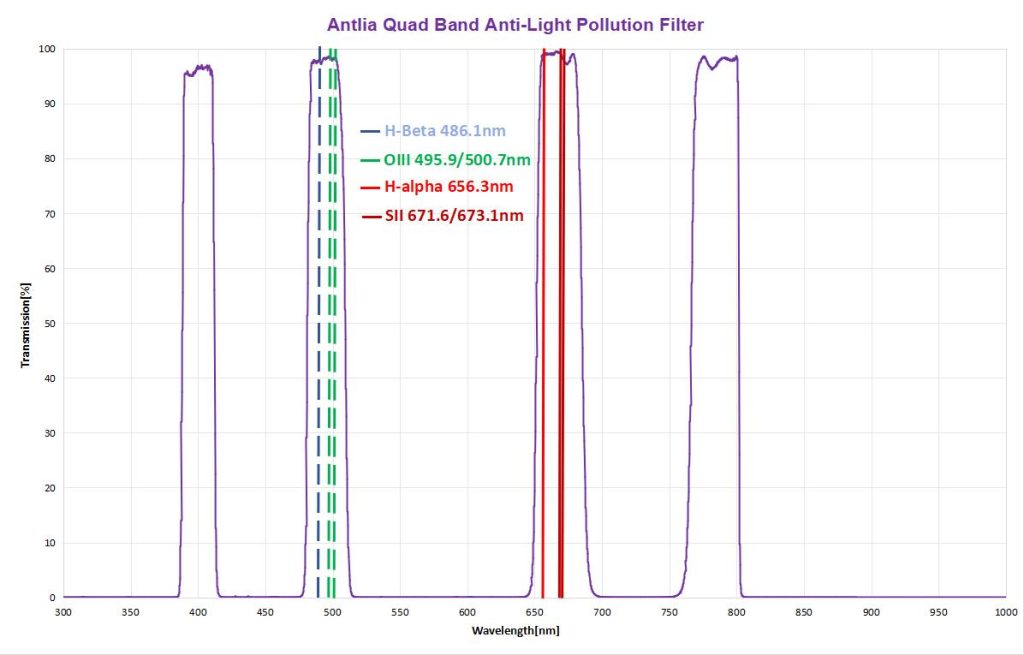The Antlia Quad Band Anti-Light Pollution Filter is designed to suppress unwanted light for both colour and monochrome cameras. It allows you to capture a wide range of deep-sky objects—such as galaxies, reflection nebulae, emission nebulae, and star clusters—under various sky conditions, from heavily light-polluted Bortle 8 locations to pristine Bortle 1 skies. Its spectral transmission covers the visible light spectrum, as well as the near-ultraviolet (NUV) and near-infrared (NIR) regions.
Antlia engineered this filter with a broad bandpass to support fast optical systems, handling focal ratios as quick as f/2 without loss of performance.
With modern cameras offering high quantum efficiency (QE) in the NIR range—and considering that NIR is less affected by artificial light pollution—Antlia designed the Quad Band filter to include strong transmission in the NIR band. This design improves the signal-to-noise ratio and contrast by capturing both visible and NIR signals. It also helps maintain accurate colour balance, making post-processing more manageable.
Some deep-sky objects, such as M51 and M83, emit significant signals in the NIR region. Using the Antlia Quad Band filter allows you to capture these objects with greater contrast, even under light-polluted skies.
If you pair this filter with a camera that uses UV/IR cut protective glass, the visible light transmission remains unaffected, but the IR cut glass restricts your ability to capture NIR signals. For that reason, the Antlia Quad Band filter performs best with cameras that feature AR (anti-reflection) protective glass, as these can record both visible and NIR bands, delivering the full benefit of the filter’s spectral design.
Application and Performance:
-
Reduces light pollution effectively by cutting most orange-yellow light at 589nm and part of blue light from LEDs
-
Allows you to capture over 95% of deep-sky objects
-
Features a unique spectral design, expanding possibilities for astrophotography
-
Provides high transmittance of key emission lines—H-alpha, SII, OIII, and H-beta—in the visible spectrum, enhancing signal-to-noise ratio (SNR) and contrast
-
Includes strong transmittance in the near-infrared (NIR) region
-
Enables imaging of deep-sky objects that require NIR transmission, which other filters without NIR support cannot capture
-
Handles fast optical systems with focal ratios down to f/2, thanks to its broad bandpass design
-
Maintains good colour balance, aided by additional short-wavelength transmission
-
Simplifies colour correction in post-processing, reducing effort and time
-
Delivers superior optical reliability, further minimising post-processing adjustments
-
Built with high-quality optical substrate, single and non-glued construction
-
Offers surface quality rated at S/D 60/40 (based on MIL-O-13830 standard)
-
Ensures transmitted wavefront accuracy of lambda/4 or better
-
Maintains parallelism of less than 30 arcseconds for precise imaging
Spectrum Curve:
Filter Ring:
Antlia standard ring:1.25” (M28.5*0.6),2”(M48*0.75)
Ultra-thin filter cell to minimize vignetting by maximise possible clear aperture
Black Anodised Finish
Laser Engraving No Fading
Not Recommended:
Solar imaging
Night visual observation




Reviews
There are no reviews yet.